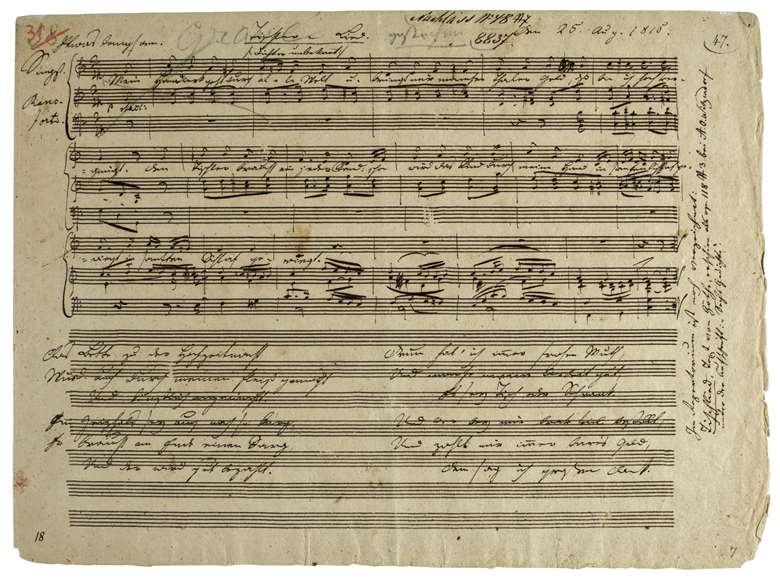More Than Artifacts: How Autograph Scores, Documents and Letters Bring us Closer to the Music
Advertisement
Monday, November 26, 2018
Sponsored feature

Most musicians and music lovers spend a lifetime trying to get closer to the people responsible for writing the works they love. Many of those composers lived centuries ago. Many of them led lives and projected personalities we know precious little about. Many of them wrote music whose very popularity has seen it obscured by centuries of external tradition and commentary.
In truth, we do have a fast track to better understanding the likes of Bach, Handel, Schubert, Beethoven and even Wagner. Autograph scores and letters offer tantalizing glimpses into the minds of these geniuses while remaining fascinating artifacts in themselves. In many cases, the paper they are contained on alone could tell stories, having survived wars and crossed continents. Add to that the composer’s handwriting in words and music, and you have a priceless piece of history in physical form.
Well, not quite priceless, as it happens. On 4 December, over 100 such items will go on sale at Europe’s leading auction house for music manuscripts and memorabilia, Sotheby’s. The hoard – each of which has a guide price (they range from the thrifty £300 to the investment-level £70,000) – includes some manuscripts that have only recently come to light as the international market for such items has grown more and more competitive.
Like, for example, handwritten autograph manuscripts of two songs by Franz Schubert, both of which were long believed lost. On one remarkable day in the middle of his ‘annus mirabilis’ of 1815, Schubert wrote nine songs including Tischler-Lied D274 and Todtenkranz für ein Kind D275. As part of next week’s auction, Sotheby’s will present the only known manuscripts of these two songs, written in the composer’s hand and with his own annotations and additional verses of text.
While the value of such autograph scores is rising steadily (some estimate an increase of around 10 per cent year on year for manuscripts from big names), the experience of looking at them – of holding them in your hands – is impossible to weigh in monetary terms. On these documents, we see all the nuances and emphases that the sanitized published scores invariably hide. From them, we sense the mood of the composer at the time of composition. Crossings-out and spur-of-the-moment additions tell us what might have been and help us to chart the origins and direction of the compositional impulse.
While that is certainly the case in the two Schubert manuscripts on sale – and there are more such manuscripts from Brahms, Ravel, Mendelssohn, Humperdinck, Richard Strauss and Delius (including the hitherto undiscovered first two movements to his 1888 String Quartet in C minor) – certain artifacts communicate rather more unequivocally. Among the Sotheby’s catalogue for 4 December is a remarkable document from the hand of Richard Wagner.
Few composers felt the need to explain themselves so thoroughly outside their scores as Wagner did, but that doesn’t make his various communiqués any less individually revelatory. In his detailed scenario and prose draft to the music drama Wiland der Schmied, written by hand in October 1850, Wagner sets out his vision for the ‘music of the future’ with extraordinary clarity. This prescient document includes a premonition of his magnum opus Der Ring des Nibelungen, as the ‘Niedlings’ steal the Princess Swanhilde’s ‘magic ring’. Wagner never wrote the music for this drama, making his visionary blueprint even more essential.
Scholars could pore over the psychological and aesthetic implications of that particular document for an age. But there is something delightfully simple about another missive from Wagner’s pen: a simple, handwritten quotation of the main theme from his opera Die Meistersinger von Nürnberg, signed and delivered a couple of months before the opera’s premiere in 1868. This little, unique product of Wagner’s time on earth is similar to dozens in the Sotheby’s catalogue from other composers from Puccini to Copland to Bernstein. There might not be much of academic or musicological interest in such miniature relics, but they offer a tantalizing chance to get your hands on an actual piece of musical history.
Visit sothebys.com to find out more











